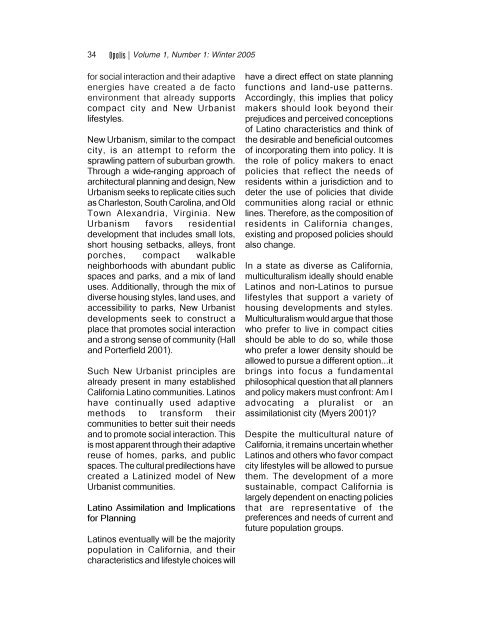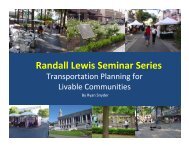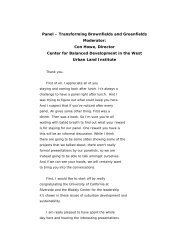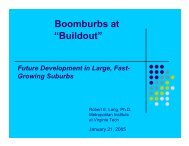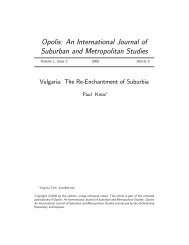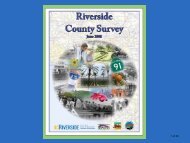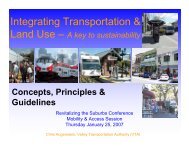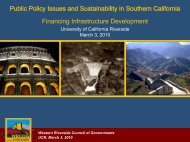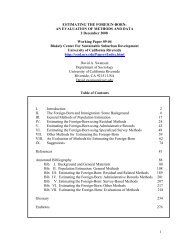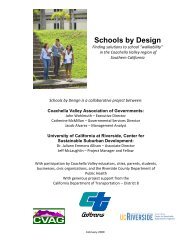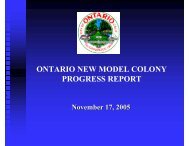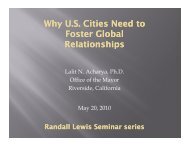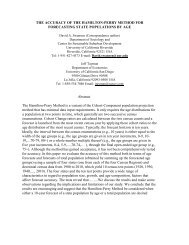Latino New Urbanism: Building on Cultural Preferences - Center for ...
Latino New Urbanism: Building on Cultural Preferences - Center for ...
Latino New Urbanism: Building on Cultural Preferences - Center for ...
Create successful ePaper yourself
Turn your PDF publications into a flip-book with our unique Google optimized e-Paper software.
34 Opolis | Volume 1, Number 1: Winter 2005<br />
<strong>for</strong> social interacti<strong>on</strong> and their adaptive<br />
energies have created a de facto<br />
envir<strong>on</strong>ment that already supports<br />
compact city and <str<strong>on</strong>g>New</str<strong>on</strong>g> Urbanist<br />
lifestyles.<br />
<str<strong>on</strong>g>New</str<strong>on</strong>g> <str<strong>on</strong>g>Urbanism</str<strong>on</strong>g>, similar to the compact<br />
city, is an attempt to re<strong>for</strong>m the<br />
sprawling pattern of suburban growth.<br />
Through a wide-ranging approach of<br />
architectural planning and design, <str<strong>on</strong>g>New</str<strong>on</strong>g><br />
<str<strong>on</strong>g>Urbanism</str<strong>on</strong>g> seeks to replicate cities such<br />
as Charlest<strong>on</strong>, South Carolina, and Old<br />
Town Alexandria, Virginia. <str<strong>on</strong>g>New</str<strong>on</strong>g><br />
<str<strong>on</strong>g>Urbanism</str<strong>on</strong>g> favors residential<br />
development that includes small lots,<br />
short housing setbacks, alleys, fr<strong>on</strong>t<br />
porches, compact walkable<br />
neighborhoods with abundant public<br />
spaces and parks, and a mix of land<br />
uses. Additi<strong>on</strong>ally, through the mix of<br />
diverse housing styles, land uses, and<br />
accessibility to parks, <str<strong>on</strong>g>New</str<strong>on</strong>g> Urbanist<br />
developments seek to c<strong>on</strong>struct a<br />
place that promotes social interacti<strong>on</strong><br />
and a str<strong>on</strong>g sense of community (Hall<br />
and Porterfield 2001).<br />
Such <str<strong>on</strong>g>New</str<strong>on</strong>g> Urbanist principles are<br />
already present in many established<br />
Cali<strong>for</strong>nia <str<strong>on</strong>g>Latino</str<strong>on</strong>g> communities. <str<strong>on</strong>g>Latino</str<strong>on</strong>g>s<br />
have c<strong>on</strong>tinually used adaptive<br />
methods to trans<strong>for</strong>m their<br />
communities to better suit their needs<br />
and to promote social interacti<strong>on</strong>. This<br />
is most apparent through their adaptive<br />
reuse of homes, parks, and public<br />
spaces. The cultural predilecti<strong>on</strong>s have<br />
created a Latinized model of <str<strong>on</strong>g>New</str<strong>on</strong>g><br />
Urbanist communities.<br />
<str<strong>on</strong>g>Latino</str<strong>on</strong>g> Assimilati<strong>on</strong> and Implicati<strong>on</strong>s<br />
<strong>for</strong> Planning<br />
<str<strong>on</strong>g>Latino</str<strong>on</strong>g>s eventually will be the majority<br />
populati<strong>on</strong> in Cali<strong>for</strong>nia, and their<br />
characteristics and lifestyle choices will<br />
have a direct effect <strong>on</strong> state planning<br />
functi<strong>on</strong>s and land-use patterns.<br />
Accordingly, this implies that policy<br />
makers should look bey<strong>on</strong>d their<br />
prejudices and perceived c<strong>on</strong>cepti<strong>on</strong>s<br />
of <str<strong>on</strong>g>Latino</str<strong>on</strong>g> characteristics and think of<br />
the desirable and beneficial outcomes<br />
of incorporating them into policy. It is<br />
the role of policy makers to enact<br />
policies that reflect the needs of<br />
residents within a jurisdicti<strong>on</strong> and to<br />
deter the use of policies that divide<br />
communities al<strong>on</strong>g racial or ethnic<br />
lines. There<strong>for</strong>e, as the compositi<strong>on</strong> of<br />
residents in Cali<strong>for</strong>nia changes,<br />
existing and proposed policies should<br />
also change.<br />
In a state as diverse as Cali<strong>for</strong>nia,<br />
multiculturalism ideally should enable<br />
<str<strong>on</strong>g>Latino</str<strong>on</strong>g>s and n<strong>on</strong>-<str<strong>on</strong>g>Latino</str<strong>on</strong>g>s to pursue<br />
lifestyles that support a variety of<br />
housing developments and styles.<br />
Multiculturalism would argue that those<br />
who prefer to live in compact cities<br />
should be able to do so, while those<br />
who prefer a lower density should be<br />
allowed to pursue a different opti<strong>on</strong>...it<br />
brings into focus a fundamental<br />
philosophical questi<strong>on</strong> that all planners<br />
and policy makers must c<strong>on</strong>fr<strong>on</strong>t: Am I<br />
advocating a pluralist or an<br />
assimilati<strong>on</strong>ist city (Myers 2001)?<br />
Despite the multicultural nature of<br />
Cali<strong>for</strong>nia, it remains uncertain whether<br />
<str<strong>on</strong>g>Latino</str<strong>on</strong>g>s and others who favor compact<br />
city lifestyles will be allowed to pursue<br />
them. The development of a more<br />
sustainable, compact Cali<strong>for</strong>nia is<br />
largely dependent <strong>on</strong> enacting policies<br />
that are representative of the<br />
preferences and needs of current and<br />
future populati<strong>on</strong> groups.


